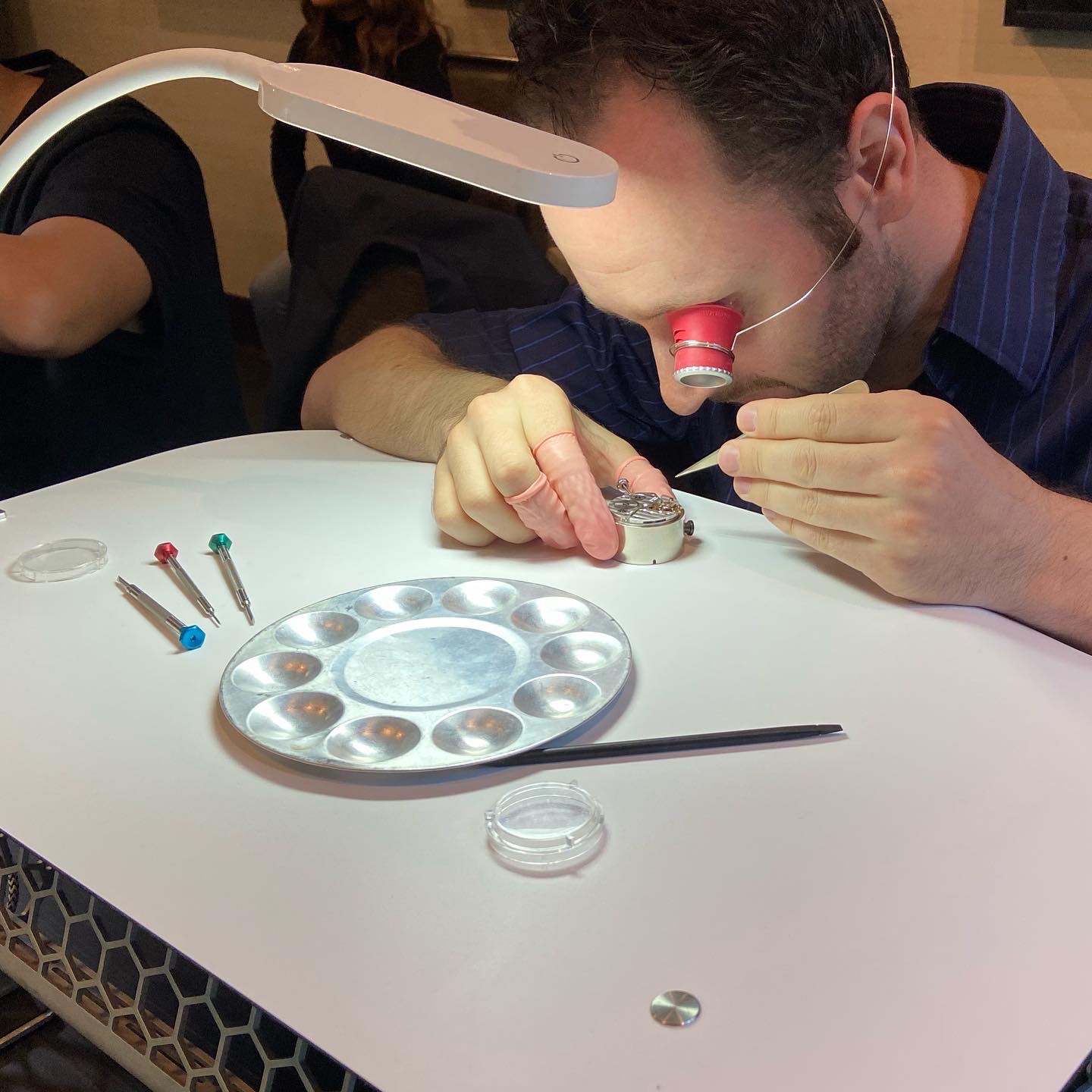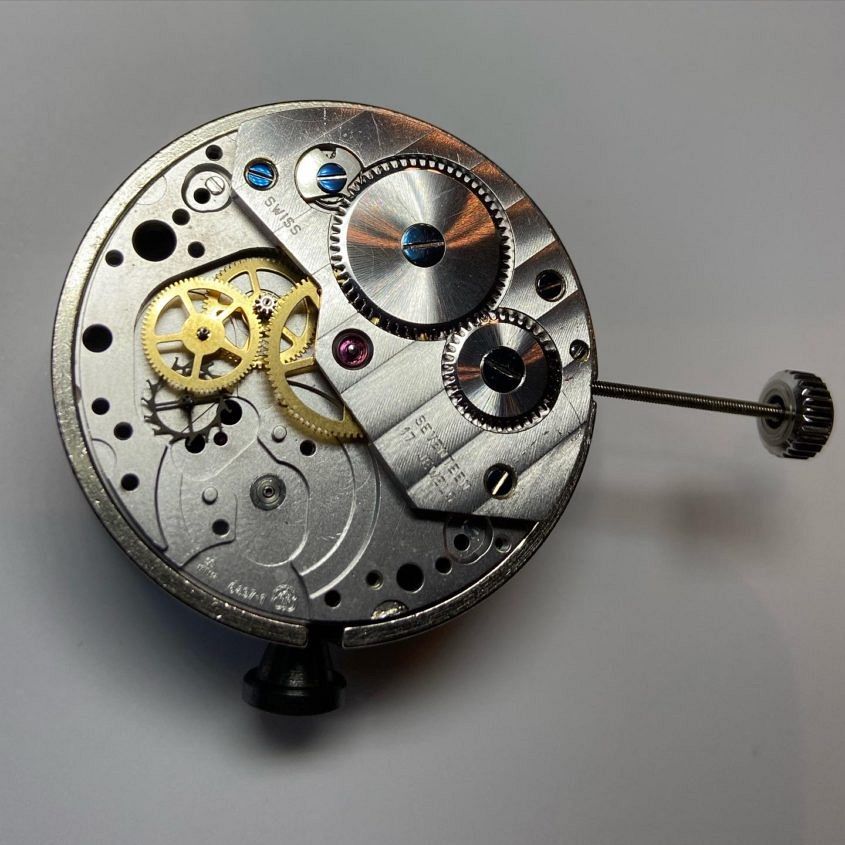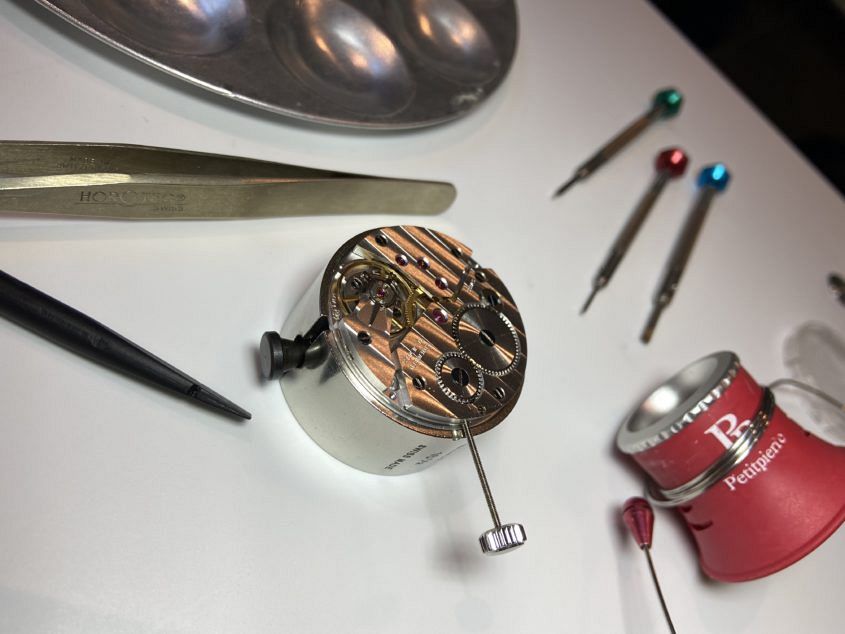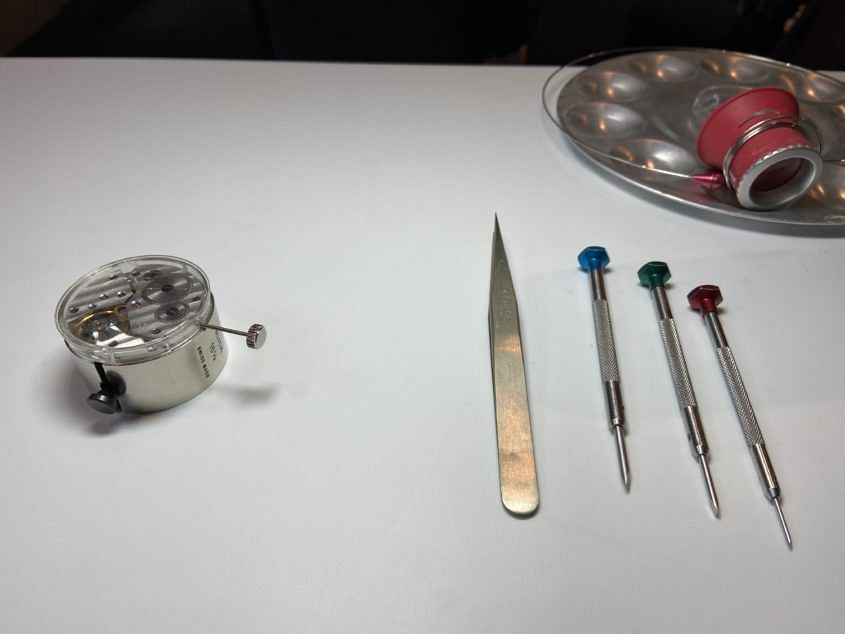Completing the HSNY Watchmaking 101-103 course, the “closest thing to giving something life” a man can get
Roman SEditor’s note: Time+Tide Watches is very proud to be the first official media partner of the Horological Society of New York in history. Over this weekend, the HSNY ran their first watchmaking courses in Australia, and Roman S, a longtime reader and subject of several T+T stories (he has spectacular and unusual taste in watches), put pen to paper on his experience of completing ‘Watchmaking 101-103’, a class run in conjunction with The Hour Glass.
For many watch enthusiasts, the idea of spending hours of intense concentration at a watchmaker’s bench holds a certain amount of nostalgia and appeal. Whilst tremendous advances in automation have allowed robots to step into the space once solely occupied by human hands, the humble watchmaker’s bench is still an object of pride and devotion for the practice of advanced skill and mechanical ingenuity.
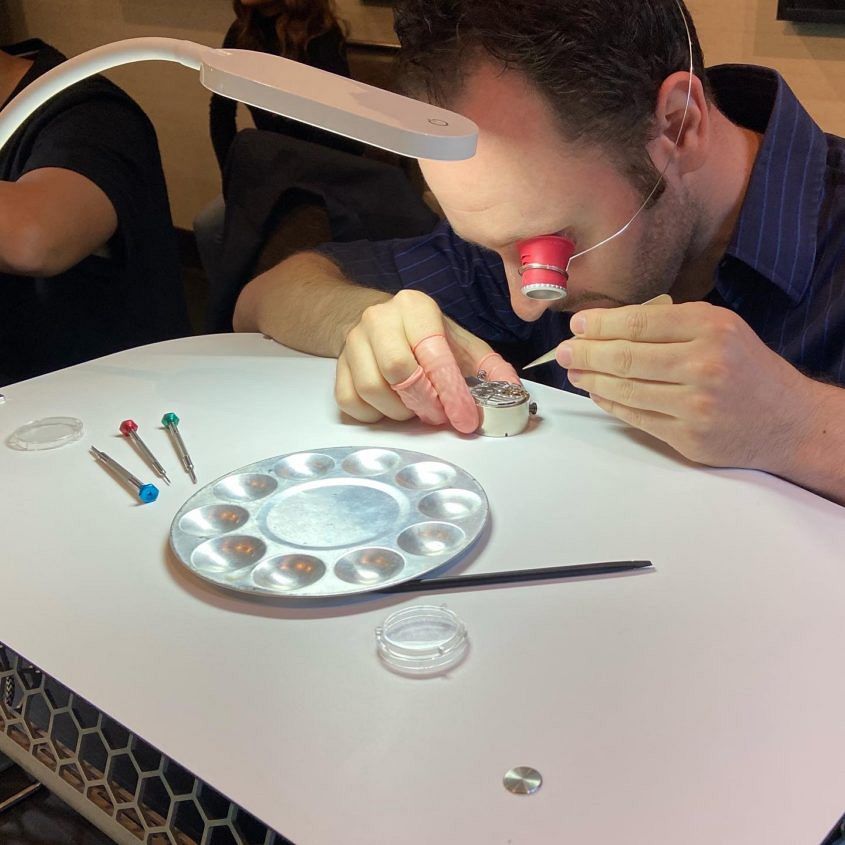
Thus, it was with a mixture of excitement and trepidation that I signed up to the “Horology 101-103” class hosted by the Horological Society of New York (HSNY), The Hour Glass and Time+Tide in Melbourne.
The Horological Society of New York was established in 1866, and has been providing classes to the public since the 1950s. More recently, HSNY has started touring watchmaking classes across the USA and Asia; however, this is the first time Steve Eagle (HSNY Director of Education) has ventured Down Under to connect with the enthusiasts here. And it’s also the first time in history HSNY has collaborated with a media partner, our very own Time+Tide.
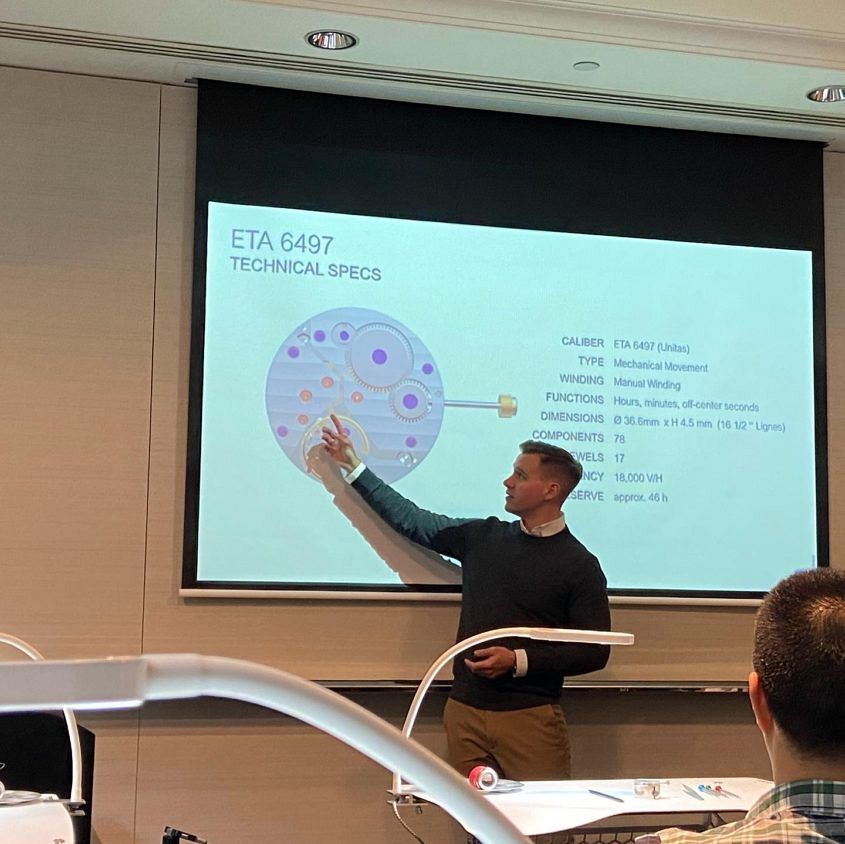
The Melbourne class, which I attended, was ably assisted by our local wunderkind WOSTEP-trained master-watchmaker Michael Woods. Both Michael and Steve were happy to share anecdotes and experiences from their own time in horology school or at the bench, and no question was off-limits.
Sporting two loupes and a resplendent beard, Michael was on hand to assist Steven in introducing us yokels to the secret art of dismantling and (all being well) reassembling the Unitas 6498 mechanical movement. The Unitas 6498 is the classic pocket-watch-size movement, on which most new watchmakers start their training (or cut their teeth on – if you will forgive a horological pun).
Watchmaking 101, step by step
And so, here goes.
We kick off with a preliminary lesson on how various wheels interact from the mainspring and the gear train to escapement and time indicators. Then onto describing various types of watch mechanisms, introduction to the tools (screwdrivers, loupe, etc) and the specs of the movement we were about to tear into (78 parts!). All set now, and after slipping on the rubber finger protectors, we are off and running. And when I say running, of course, I mean proceeding carefully under the patient tutelage of our teachers.
No previous skill, besides knowing the right way to hold a screwdriver, is required for this class. The HSNY training program is well set-up to show clear step-by-step instructions and animations on a big screen. They know how to get complete beginners to enjoy this without getting in the weeds. Needless to say – I am pumped.
The class is divided into two halves: disassembly first, and re-assembly of the movement second.
Gripping the screwdriver as shown by Steve, we proceed first to loosen the screws and remove the bridge holding the balance wheel and hairspring. Taking it off is easy – putting it back in later will be much more of a hair-raising matter (that’s another pun for you, in case you are keeping track at home). Pallet fork and escape wheel join them soon after.
A couple of bridges and wheels come off next, and then it is time to turn the movement over and get to the keyless works mechanism and crown. Spending time with your nose two inches away from these tiny components really makes you appreciate the ingenuity of the lever escapement (first invented by Thomas Mudge in 1755!) and the practical genius of watchmakers who perfected these mechanisms over the subsequent centuries and decades.
The yoke spring and the setting lever jumper are the next tricky devils to deal with, but even they eventually surrender and come out without drama. And just like that – BOOM! The 6498 is a pile of neat components in a tray and it’s time for a break and chat with the other students.
The second half of the class marches on with a steady pace, and my confidence starts going up. All the way until it’s time to deal with the tiny escape wheel (which is tricky to settle back in its jewel) and the escape wheel, which to my mind requires a third hand to hold, but Michael and Steve manage at first attempt without breaking stride (those show-offs).
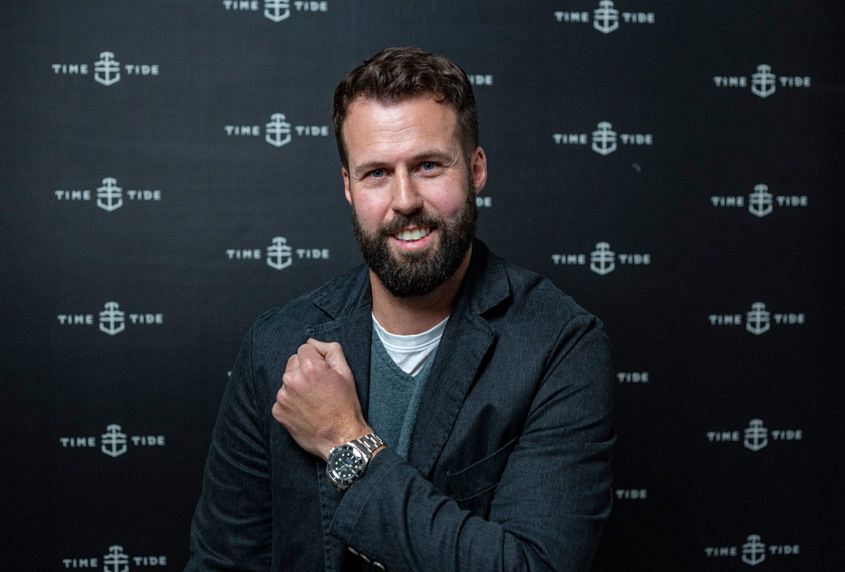
By the way, the first time you see the reassembled movement begin beating again right in your hand is pure adrenalin! I can absolutely see why watchmakers find it so addictive. It is the closest a man will ever feel to giving something life (salute to the amazing women out there who manage the miracle of childbirth!). Honestly, the only word to describe it is MAGIC!
And just like that – the Unitas 6498 is back together. No parts left over. I must confess, I have grown quite fond of this particular collection of metal parts and springs over the last four hours. We have shared history now.
My final thoughts
Take my advice. If you get a chance to sign up for a watchmaking class (HSNY-run or otherwise) – TAKE IT!
This was a perfect mix of Zen meditation and active learning. Moreover, it left me with a much greater appreciation of just how much learning, training and skill it takes to assemble and service the little horological wonders we love.
Watchmakers at the bench – I salute you!




